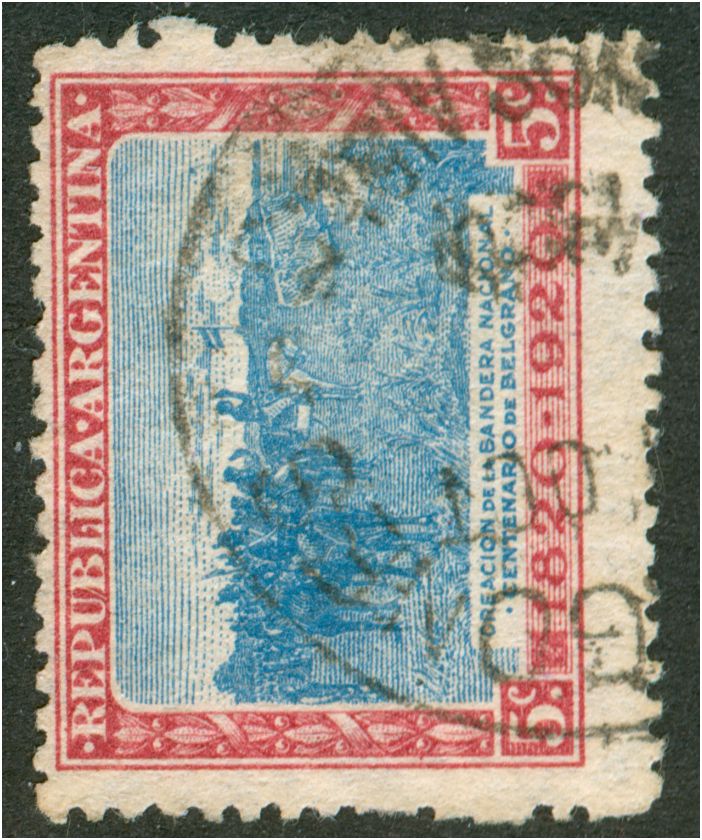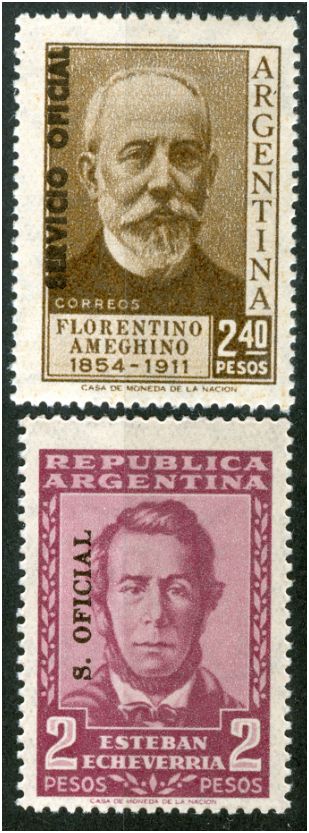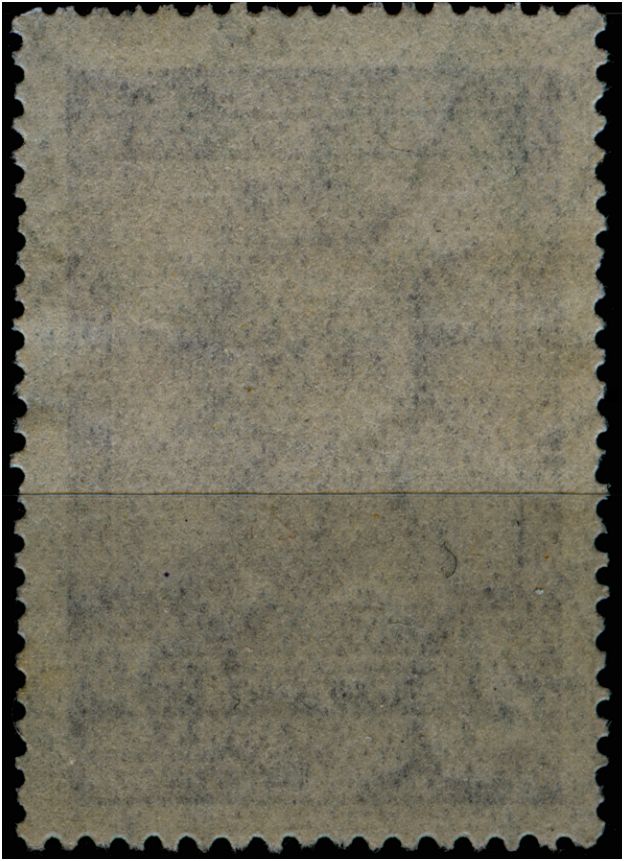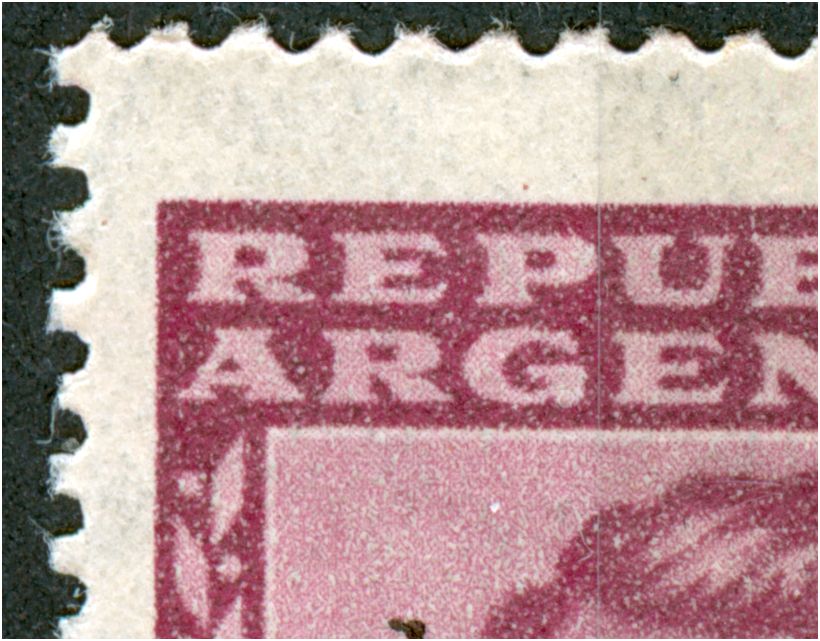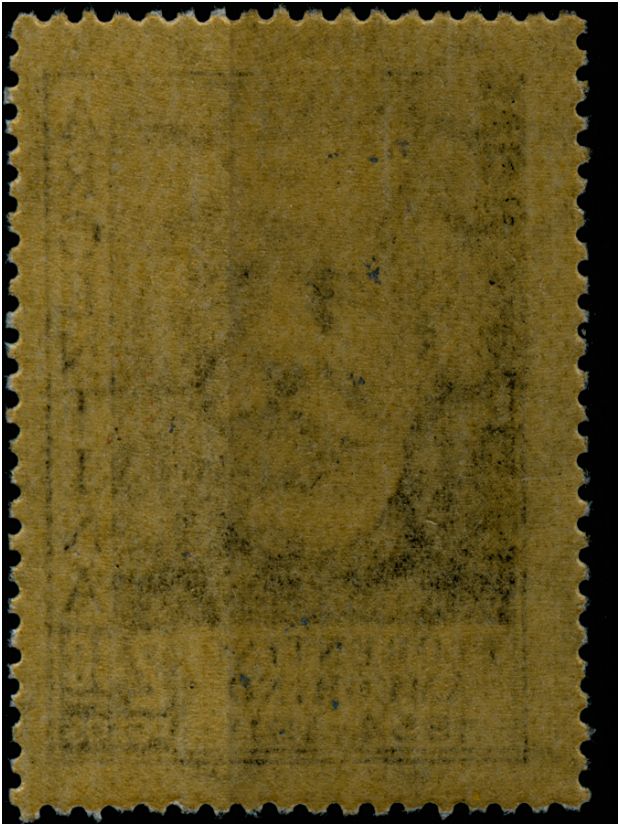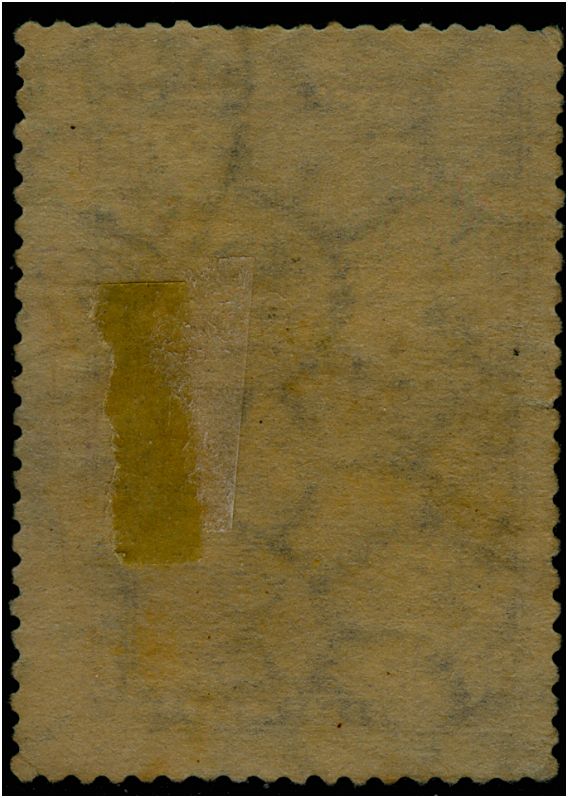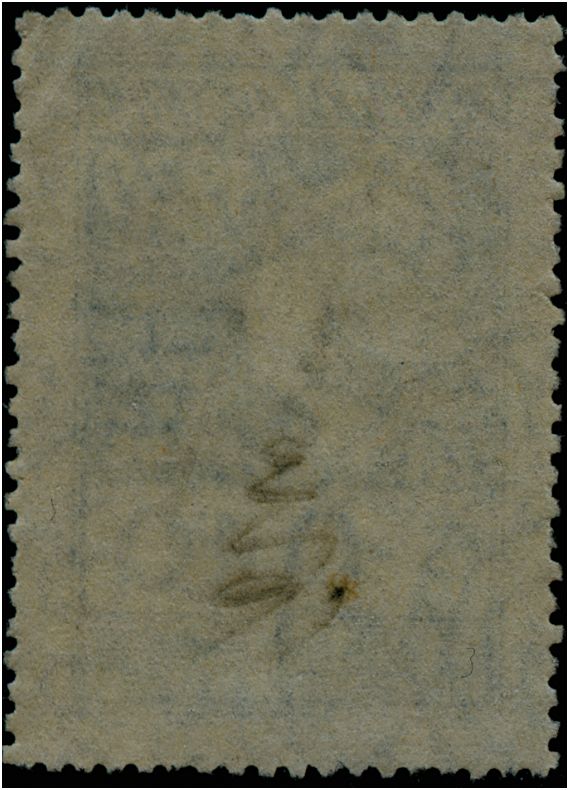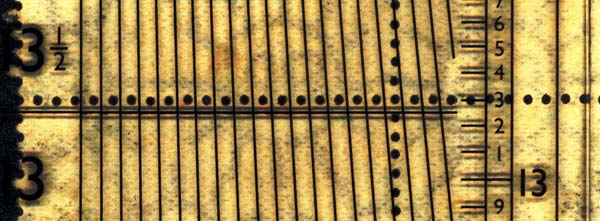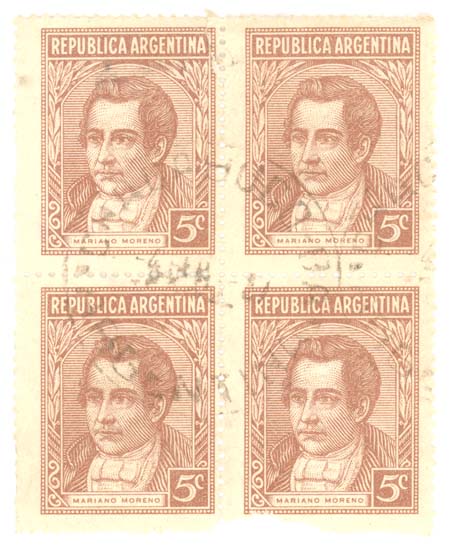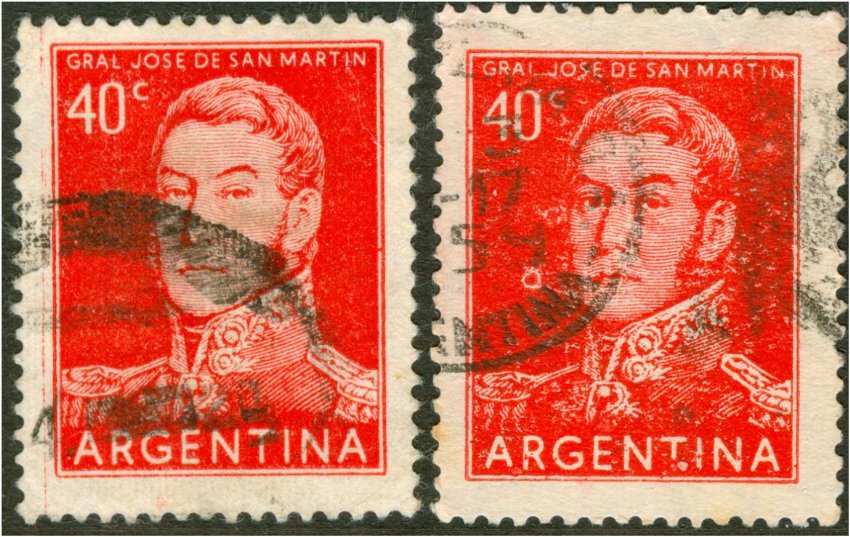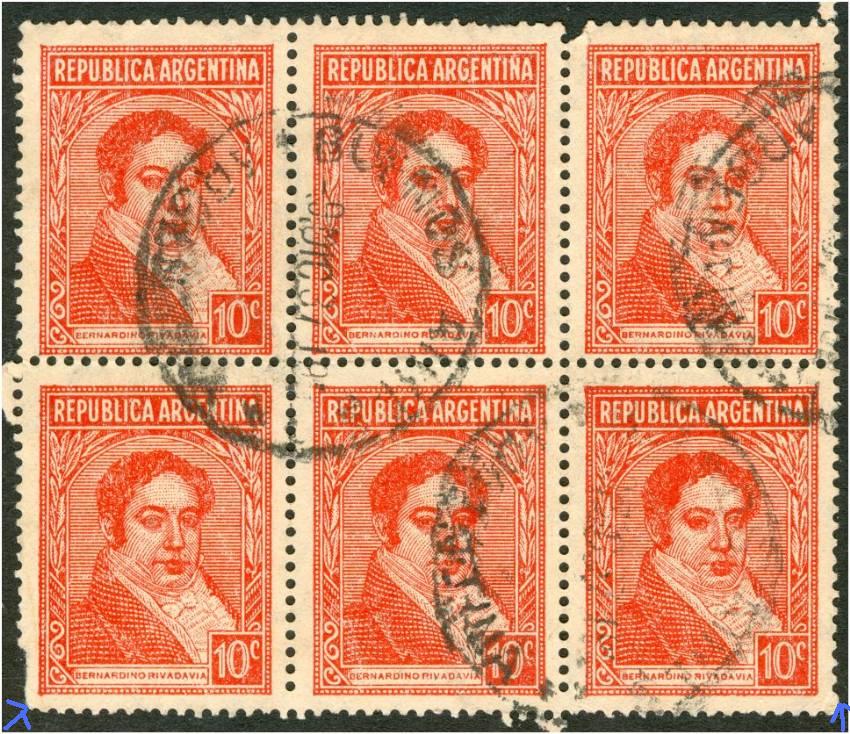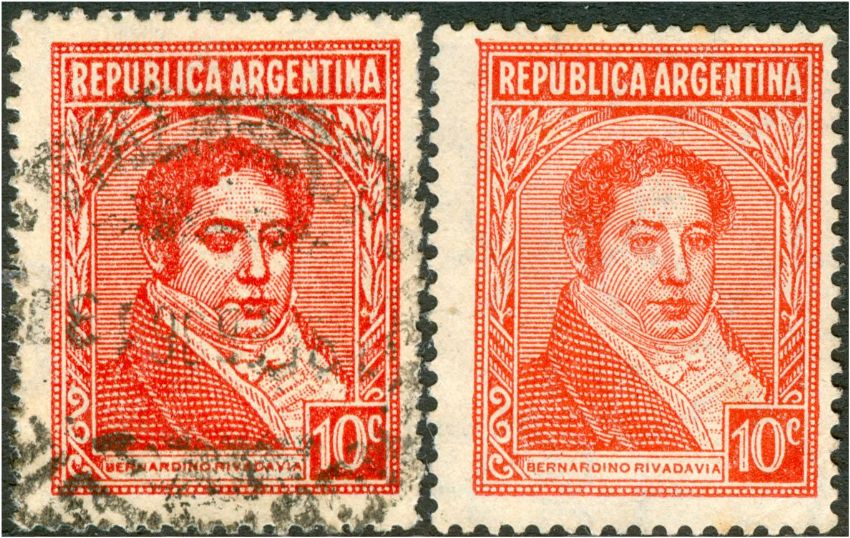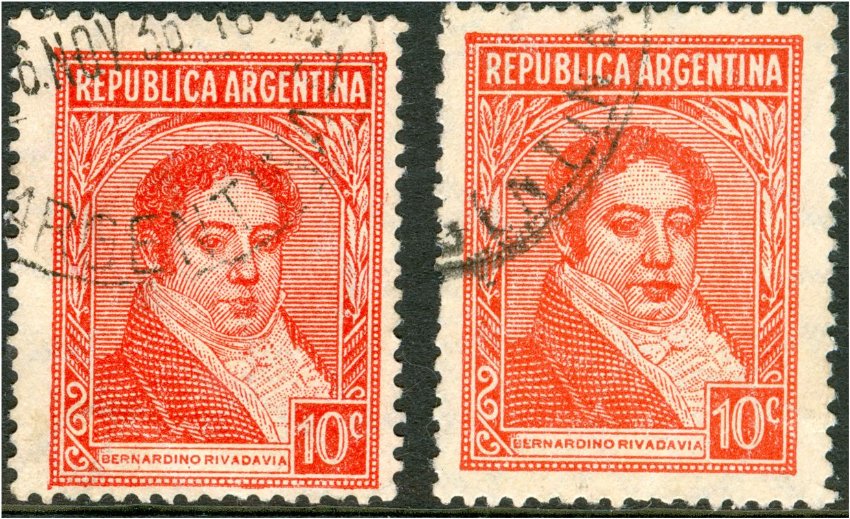Standard sizes and perforations
Publicado: 02 Abr 2010 16:39
As happens all over the world the printing houses started to minimize the number of sizes for stamps; line perforations got replaced by comb perforations as soon as the printing methods did allow. The production of a good perforation block got quite expensive as well. One block will now cost about 10.000 euro!
The Argentinean stamp sizes are not described in the catalogues, I will make a start here and eventually also give pictures to go with it.
Standard perforations since 1908 by the Casa de Moneda de la Nación:
A
C12 1/2: 13 1/2 16/14 typo (1908-), offset-litho (1916- ),
C13 1/2 17/14 typo (1908), offset-litho (1916- ),
B
a. C13 1/4 (1/4) 16/20 typo (1908-), offset (1916-)
b. C13 1/4 (1/4) 20/16 typo (1908-), offset (1916-)
C
C12 1/4: 12 3/4 24/18 offset (1928-1930)
The C perforation had been used only for 2 stamp issues; the base line indeed has 24 teeth, the sideways "needles" come up with 18 teeth:
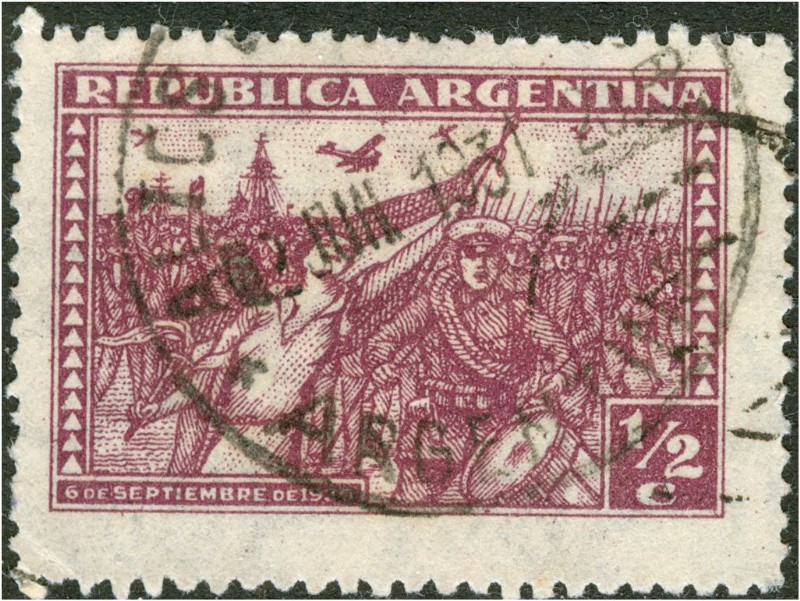
the top tooth can be a little bit thicker:
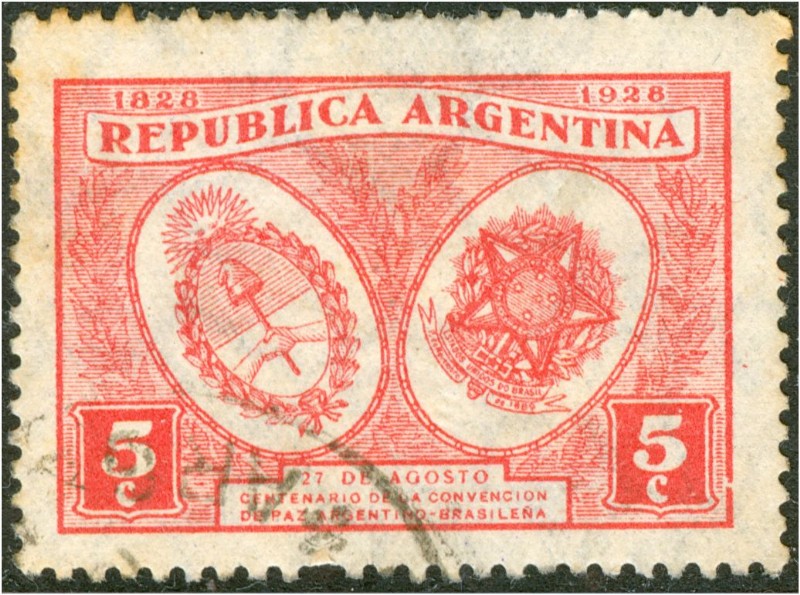
Or quite a lot thicker!
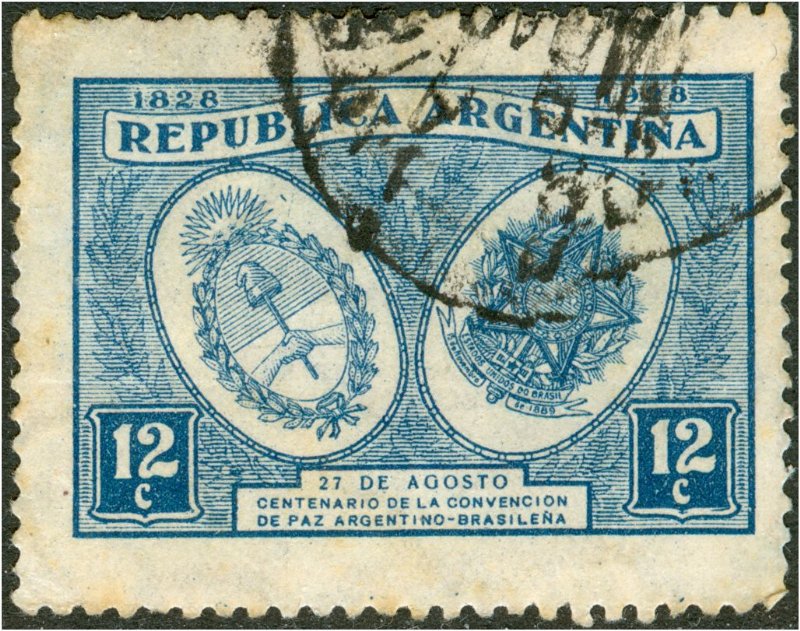
The Argentinean stamp sizes are not described in the catalogues, I will make a start here and eventually also give pictures to go with it.
Standard perforations since 1908 by the Casa de Moneda de la Nación:
A
C12 1/2: 13 1/2 16/14 typo (1908-), offset-litho (1916- ),
C13 1/2 17/14 typo (1908), offset-litho (1916- ),
B
a. C13 1/4 (1/4) 16/20 typo (1908-), offset (1916-)
b. C13 1/4 (1/4) 20/16 typo (1908-), offset (1916-)
C
C12 1/4: 12 3/4 24/18 offset (1928-1930)
The C perforation had been used only for 2 stamp issues; the base line indeed has 24 teeth, the sideways "needles" come up with 18 teeth:

the top tooth can be a little bit thicker:

Or quite a lot thicker!

